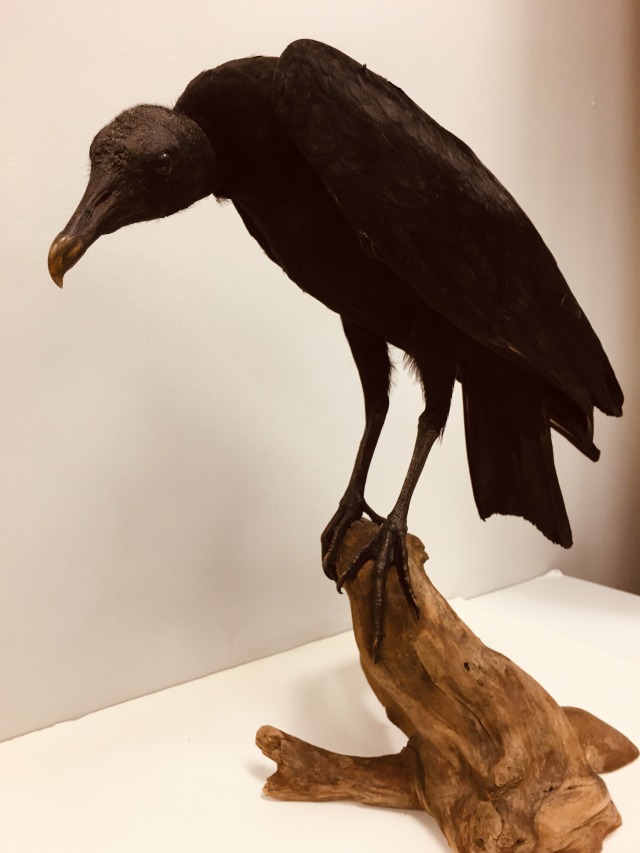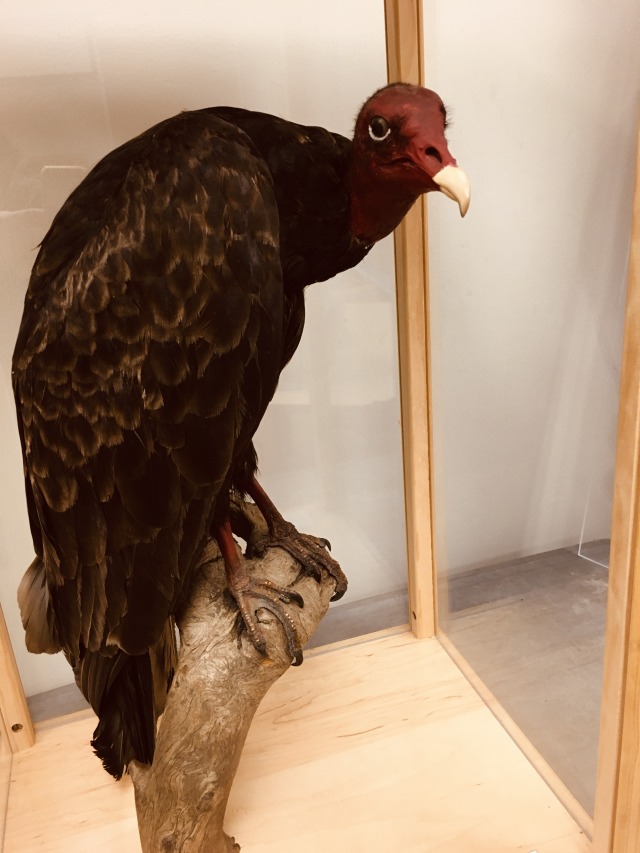On a late January afternoon, as I used binoculars to count roosting vultures on a water tower in a northern Pittsburgh suburb, the question of a friend and colleague echoed in my head. “What personal experience helped convince you that our climate is changing?”
Taiji Nelson, Senior Program Manager for the museum’s Climate and Rural Systems Partnership (CRSP), asked that question months earlier to begin a workshop session for educators about effectively engaging audiences in climate change discussions. He then spent 15 minutes fielding firsthand accounts from participants about extreme weather events, the spread of tree diseases, and the sudden appearance of previously unknown garden pests. When my vulture count reached double figures I silently vowed, “Next time Taiji’s going to hear about these birds.”
The birds, 17 Turkey Vultures and two Black Vultures, were the highlight of the three hours my wife Amy and I spent hiking and birdwatching. Black Vultures were a species we’d never before seen in western Pennsylvania. We’d frequently observed Turkey Vultures in the spring, summer, and fall, but our winter sightings of the species had been spotty. During the previous four winters we spotted a few Turkey Vultures who appeared to be spending the season in the Pittsburgh area instead of migrating further south. Before then, our year’s first sightings of these large soaring birds always occurred under mid-March skies.


Both species are scavengers who play vital roles in cleaning-up the carcasses of other animals in fields, forests, and along roadsides. Their slow, but steady northward range extension across eastern North America during the past four decades can be attributed to an increase in available food in the form of road-killed wildlife, the diminishing residues of DDT in regional food webs, and even a greater public acceptance of their presence. Warmer temperatures associated with global climate change have also played a role in the movement.
In a now 10-year-old essay on the All About Birds website of the Cornell Lab of Ornithology, author Jack Connor argues that a long term view of vulture movements suggests climate change contributed to a gradual, but for those paying attention, a certainly noticeable northward expansion.
“At each step the first vagrant birds were seen in spring and summer over a period of a year or two, a handful of nests were found a few years later, and soon, only 20 or 30 years after the first rarities appeared, the species had taken up permanent residency in an area where once it could not be found.”
One of the Black Vultures on the tower was not a completely anonymous wanderer. A rectangular red tag about twice the size of a playing card was affixed to its wing, and with the aid of a spotting scope, the figures H 73 could be clearly seen. Some internet searching by Amy, and the email response to her formal sighting report, established a previous, if only temporary, residency for the bird in the area around Martinsburg, West Virginia. The eastern panhandle town is home to the 167th Airlift Wing of the West Virginia Air National Guard, a unit that since 2018 has been working with the US Department of Agriculture in a study of Black Vulture movements aimed at reducing aviation hazards.
For more information about the Climate and Rural Systems Partnership, check out Carnegie Magazine.
Patrick McShea works in the Education and Visitor Experience department of Carnegie Museum of Natural History. Museum employees are encouraged to blog about their unique experiences and knowledge gained from working at the museum.
Related Content
Teacher Profile: Emmanuelle Wambach
Ask a Scientist: Ravens and crows, what’s the difference?
Share this post!
Carnegie Museum of Natural History Blog Citation Information
Blog author: McShea, PatrickPublication date: March 11, 2021
